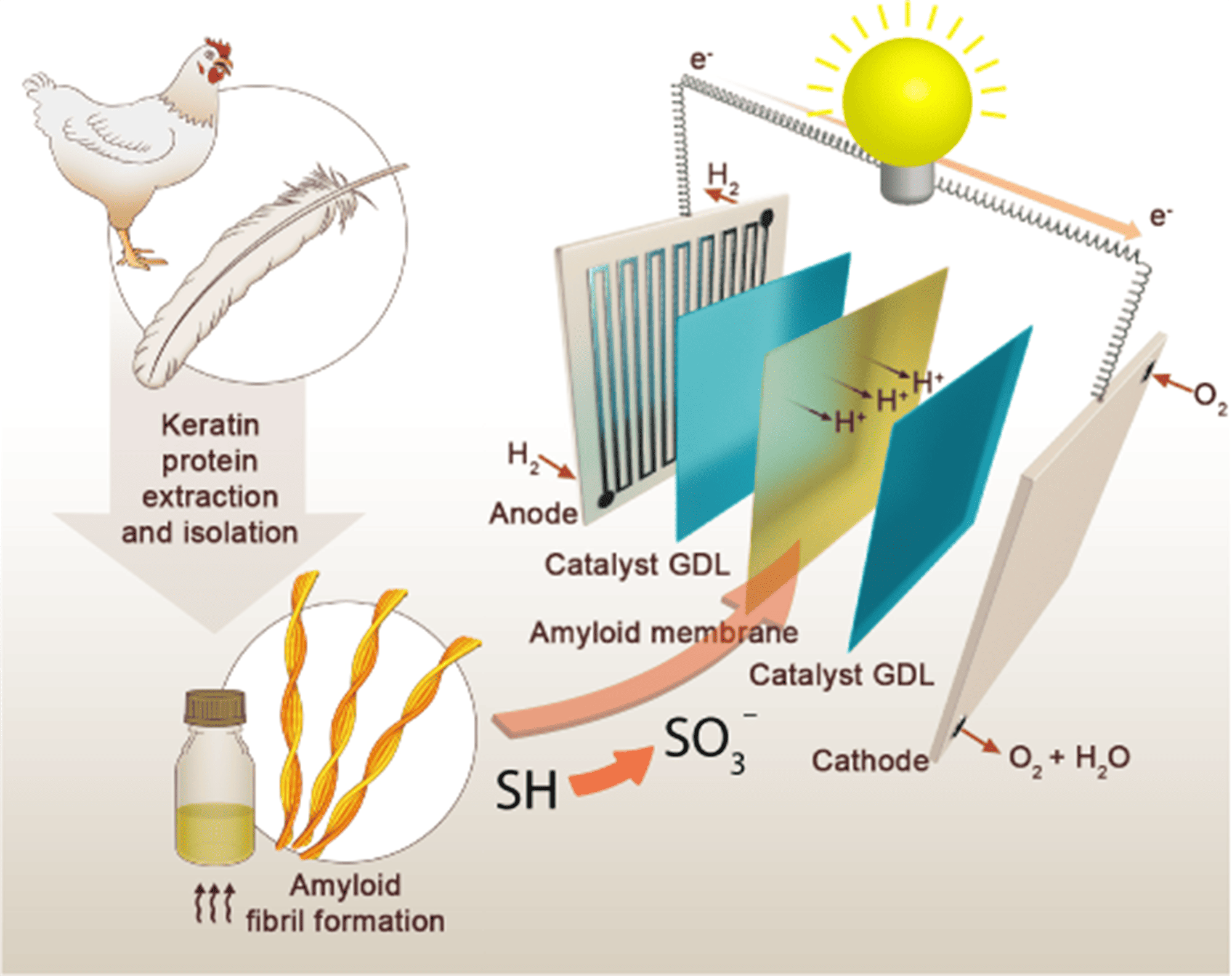Every year, the world slaughters around 74 billion chickens. That comes up to almost 140 million tons of poultry – and billions of tons of feathers too. The feathers are largely discarded and incinerated, a process that typically produces pollution and greenhouse gases. But researchers have now found a way to use chicken feathers to make fuel cells more cost-effective and sustainable.

Ideally, we’d eat less meat and slaughter fewer animals — it’d be good for the environment and our health. But in the meantime, it makes sense to make the most of the current situation and limit waste. Researchers at ETH Zurich and Nanyang Technological University Singapore (NTU) believe they’ve found a way to do just that. Essentially, they’ve managed to extract a protein called keratin from chicken feathers and convert it into membranes for fuel cells.
Chicken feathers are 90% keratin. But extracting keratin and turning it into something useful is not that easy. The key innovation here is turning the keratin into ultra-fine fibers known as amyloid fibrils. These fibrils are then turned into membranes for fuel cells.
Fuel cells use the chemical energy of hydrogen (or other fuels, but mostly hydrogen) to produce electricity. If hydrogen is the fuel, the only products are electricity, water, and heat. The membranes of the fuel cell are where the ‘magic’ happens: they allow the protons to pass but block the electrons, forcing them to flow through a circuit from the negatively charged anode to the positively charged cathode and producing electricity in the process
But the membranes of fuel cells are typically made from toxic chemicals — the so-called “forever chemicals” that don’t degrade and stay in our environment. They’re also expensive. The membranes from chicken feathers, meanwhile, are biodegradable and three times cheaper, say the researchers.
“I’ve devoted a number of years to researching different ways we can use food waste for renewable energy systems,” says Raffaele Mezzenga, Professor of Food and Soft Materials at ETH Zurich.
“Our latest development closes a cycle: we’re taking a substance that releases CO2 and toxic gases when burned and used it in a different setting: with our new technology it not only replaces toxic substances, but also prevents the release of CO2, decreasing the overall carbon footprint cycle”, Mezzenga says.
The researchers published their study and now they’re filed for a patent. Whether or not this technology becomes widely deployed remains to be seen, but it certainly offers an innovative approach to addressing two significant environmental concerns: waste from the poultry industry and the need for sustainable alternatives to traditional fuel cell membranes.
One of the most promising aspects of this discovery is its scalability. With the vast number of chicken feathers discarded annually, there is a potentially limitless supply of raw materials for these sustainable membranes. If the technology can be commercialized successfully, it could drastically reduce the cost of producing fuel cells and make them a more viable alternative for a wider range of applications.
In addition to the environmental benefits, this research could also have a profound economic impact. Poultry farmers and processing plants could potentially earn revenue from what was once a waste product. This could incentivize more sustainable farming practices and reduce the economic burden on poultry producers.
It’s also worth noting the interdisciplinary nature of this research, which bridges the gap between food science, material science, and energy production. Such collaborative efforts often lead to breakthroughs that could not be achieved within the confines of a single discipline.
Journal Reference: Soon WL, Peydayesh M, de Wild T, Donat F, Saran R, Müller CR, Gubler L, Mezzenga R, Miserez A: Renewable Energy from Livestock Waste Valorization: Amyloid-Based Feather Keratin Fuel Cells. ACS Appl. Mater. Interfaces, September 26, 2023, doi: external page10.1021/acsami.3c10218call_made




